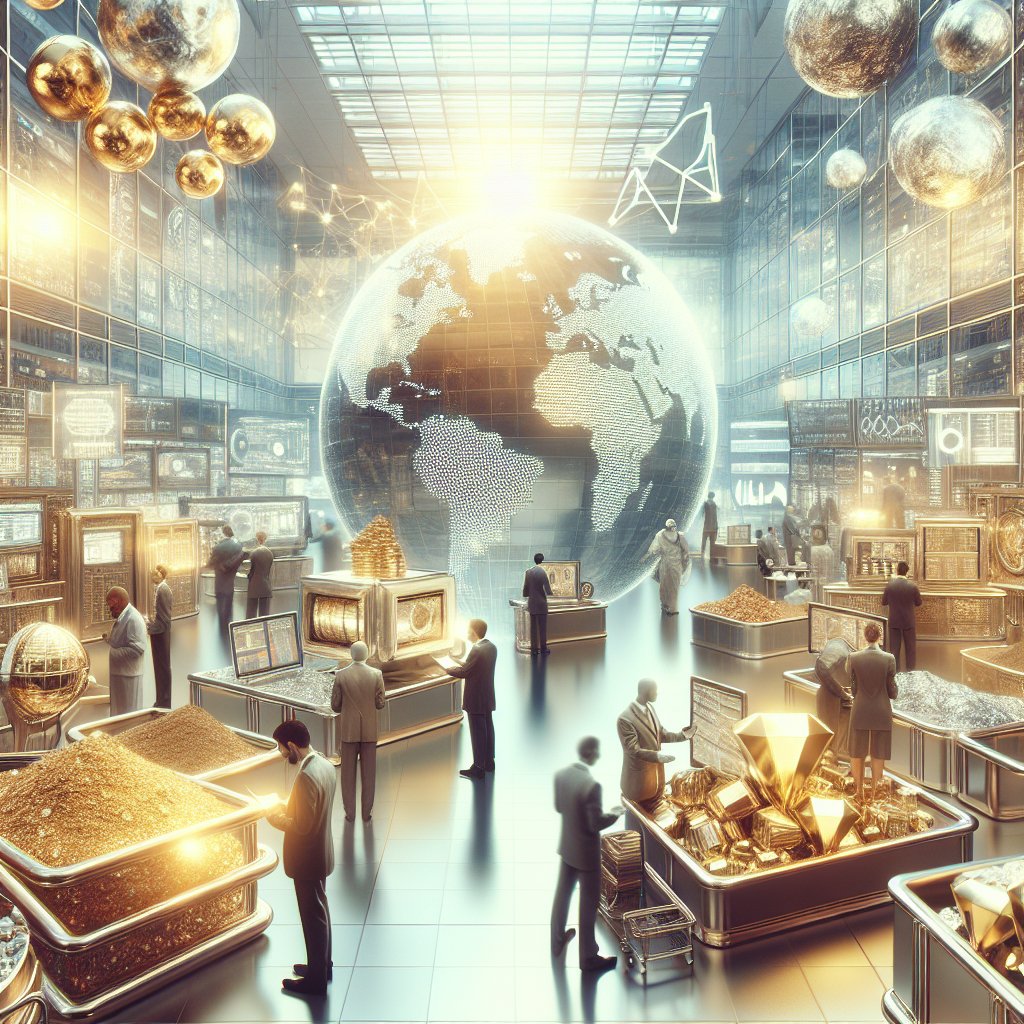The global demand for rare metals has been on a significant rise, driven by various factors that are reshaping industries and economies worldwide. These metals, often referred to as the “vitamins of modern industry,” play a crucial role in the development of advanced technologies and sustainable solutions. As the world transitions towards a more technologically advanced and environmentally conscious future, understanding the dynamics behind the surge in demand for rare metals becomes increasingly important.
The Role of Rare Metals in Modern Technology
Rare metals, including elements such as lithium, cobalt, and rare earth elements (REEs), are indispensable in the production of high-tech devices and green technologies. These metals are integral to the manufacturing of smartphones, electric vehicles (EVs), wind turbines, and solar panels. The unique properties of rare metals, such as their conductivity, magnetism, and strength, make them essential components in the miniaturization and enhancement of electronic devices.
In the realm of consumer electronics, the demand for rare metals is driven by the continuous innovation and release of new gadgets. Smartphones, tablets, and laptops require rare metals like tantalum and indium for their capacitors and touchscreens. As the global population becomes increasingly connected, the need for these devices continues to grow, thereby escalating the demand for the rare metals that power them.
Moreover, the automotive industry is undergoing a transformative shift towards electrification. Electric vehicles rely heavily on lithium-ion batteries, which require significant amounts of lithium, cobalt, and nickel. The push for cleaner transportation solutions, driven by both consumer demand and regulatory pressures, has led to a surge in EV production, further amplifying the need for these critical metals.
Renewable energy technologies also contribute to the rising demand for rare metals. Wind turbines and solar panels, key components of sustainable energy infrastructure, depend on rare earth elements for their efficient operation. As countries strive to meet climate goals and reduce carbon emissions, investments in renewable energy projects are increasing, thereby boosting the demand for the rare metals that enable these technologies.
Geopolitical and Economic Factors Influencing Supply and Demand
The supply chain for rare metals is complex and often subject to geopolitical tensions. Many of these metals are concentrated in specific regions, leading to a reliance on a limited number of countries for their extraction and processing. For instance, China dominates the production of rare earth elements, controlling over 80% of the global supply. This concentration of resources can lead to supply vulnerabilities and price volatility, especially in times of political or economic instability.
Trade policies and international relations play a significant role in shaping the availability and cost of rare metals. Tariffs, export restrictions, and trade agreements can all impact the flow of these critical resources. For example, trade tensions between major economies can lead to disruptions in the supply chain, affecting industries that depend on a steady supply of rare metals.
Economic factors, such as fluctuations in commodity prices and investment in mining infrastructure, also influence the supply and demand dynamics of rare metals. The extraction and processing of these metals are capital-intensive and environmentally challenging, requiring significant investment and technological expertise. As demand continues to rise, there is a growing need for sustainable and efficient mining practices to ensure a stable supply of rare metals.
Furthermore, the recycling and recovery of rare metals from electronic waste present both challenges and opportunities. As electronic devices reach the end of their life cycle, the potential to recover valuable metals from e-waste becomes increasingly important. Developing efficient recycling technologies can help mitigate supply risks and reduce the environmental impact of mining activities.
Future Trends and Implications for Global Industries
Looking ahead, the demand for rare metals is expected to continue its upward trajectory, driven by technological advancements and the global push towards sustainability. The transition to a low-carbon economy will necessitate the widespread adoption of clean energy technologies, further increasing the need for rare metals.
In the automotive sector, the shift towards electric vehicles is likely to accelerate, with major automakers committing to phasing out internal combustion engines in favor of electric alternatives. This transition will require substantial quantities of lithium, cobalt, and other rare metals, prompting the need for strategic investments in mining and processing capabilities.
The development of new technologies, such as 5G networks, artificial intelligence, and the Internet of Things (IoT), will also drive demand for rare metals. These technologies rely on advanced electronic components that require rare metals for their functionality and performance. As these technologies become more prevalent, the demand for the metals that enable them will continue to grow.
To address the challenges associated with the supply of rare metals, industries and governments are exploring alternative sources and technologies. Research into new materials and substitutes for rare metals is ongoing, with the aim of reducing dependency on scarce resources. Additionally, efforts to diversify supply chains and develop domestic mining capabilities are gaining momentum, as countries seek to secure their access to critical materials.
In conclusion, the surge in demand for rare metals is driven by a confluence of technological, geopolitical, and economic factors. As the world moves towards a more sustainable and technologically advanced future, the importance of these metals will only increase. Understanding the dynamics of the rare metals market and addressing the associated challenges will be crucial for industries and policymakers alike, as they navigate the complexities of the global economy.












